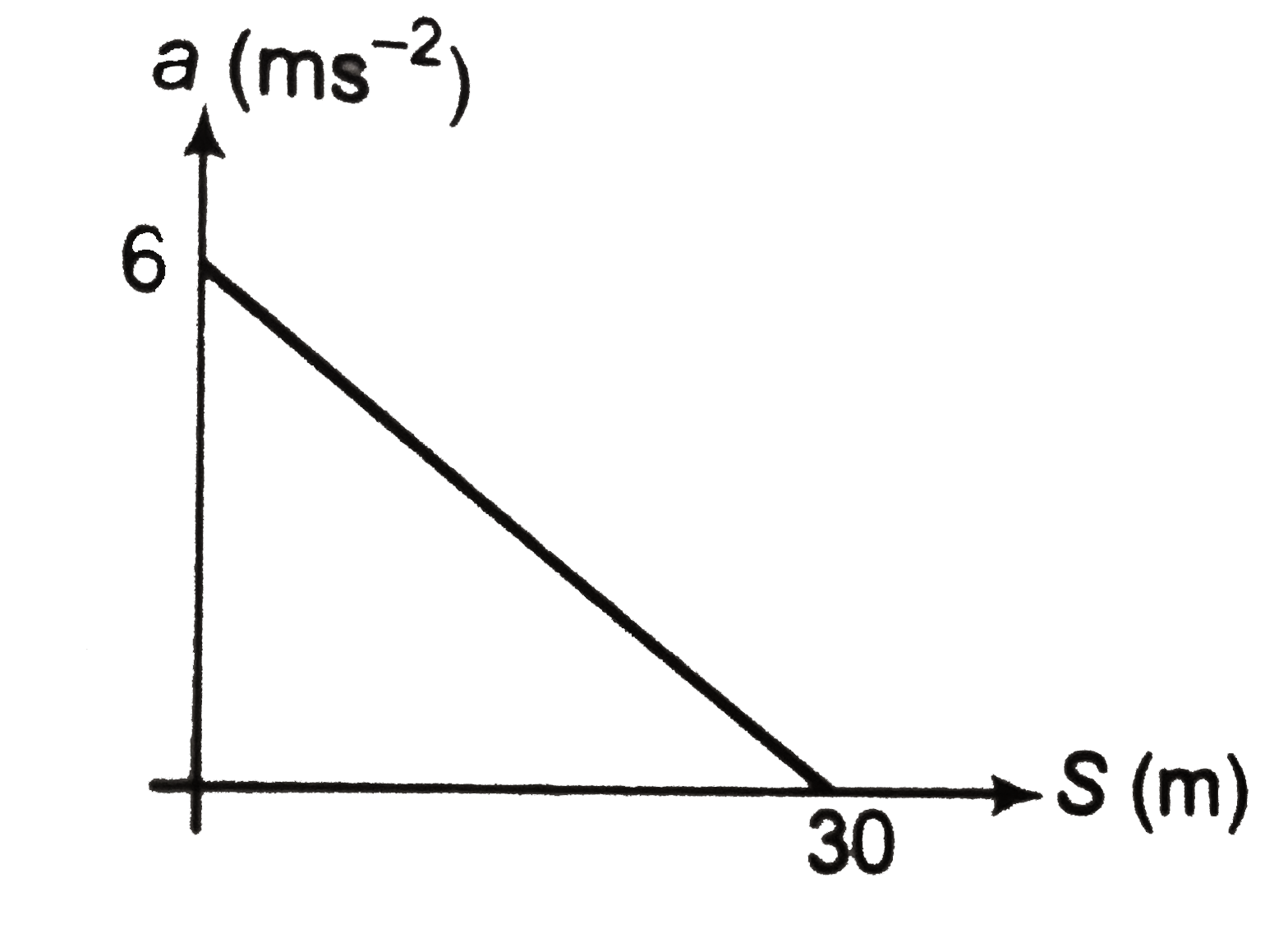A train starting from a railway station and moving with uniform acceleration attains a speed 40km/h in 10 minutes. Find its acceleration.
To find the acceleration of the train, we can follow these steps:
Step 1: Identify the given values
- Initial velocity (u) = 0 m/s (since the train starts from rest)
- Final velocity (v) = 40 km/h
- Time (t) = 10 minutes
Step 2: Convert the final velocity from km/h to m/s
To convert km/h to m/s, we use the conversion factor:
1 km/h=1000 m3600 s
Thus,
v=40 km/h=40×10003600 m/s
Calculating this gives:
v=40×10003600=400003600≈11.11 m/s
Step 3: Convert time from minutes to seconds
Since time is given in minutes, we convert it to seconds:
t=10 minutes=10×60 seconds=600 seconds
Step 4: Use the formula for acceleration
We know the formula relating final velocity, initial velocity, acceleration, and time:
v=u+at
Substituting the known values into the equation:
11.11=0+a×600
This simplifies to:
11.11=600a
Step 5: Solve for acceleration (a)
Rearranging the equation to solve for acceleration:
a=11.11600
Calculating this gives:
a≈0.01852 m/s2
or in scientific notation:
a≈1.85×10−2 m/s2
Final Answer
The acceleration of the train is approximately 1.85×10−2 m/s2.
---
- Initial velocity (u) = 0 m/s (since the train starts from rest)
- Final velocity (v) = 40 km/h
- Time (t) = 10 minutes
To convert km/h to m/s, we use the conversion factor:
1 km/h=1000 m3600 s
Thus,
v=40 km/h=40×10003600 m/s
Calculating this gives:
v=40×10003600=400003600≈11.11 m/s
Since time is given in minutes, we convert it to seconds:
t=10 minutes=10×60 seconds=600 seconds
We know the formula relating final velocity, initial velocity, acceleration, and time:
v=u+at
Substituting the known values into the equation:
11.11=0+a×600
This simplifies to:
11.11=600a
Rearranging the equation to solve for acceleration:
a=11.11600
Calculating this gives:
a≈0.01852 m/s2
or in scientific notation:
a≈1.85×10−2 m/s2
The acceleration of the train is approximately 1.85×10−2 m/s2.
Topper's Solved these Questions
Similar Questions
Knowledge Check
A train starting from rest, and moving with uniform acceleration α, acquires a speed v. Then its comes to a stop with uniform retardation β. Then the average velocity of the train is
Av/2Bv/4C(α+β)t/2D(α+β)t/αβStarting from rest a body moves with uniform acceleration and acquires a velocity v after n seconds. Then its displacement in the last two seconds is
A2v(n+1)/nB2v(n−1)/nC2v(n+1)2/nDv(n−1)2nA body starts from rest and moves with a uniform acceleration. The ratio of the distance covered in the nth sec to the distance covered in n sec is
A2n−1n2B1n2−1nC2n2−1n2D2n+1n2
A bus starting from rest moves with a uniform acceleration of 0.1m/s2 for 2 minutes. Find
(a) the speed acquired, (b) the distance travelled.
View SolutionA bus decreases its speed from 80km/h to 60km/h in 5s. Find the acceleration of the bus.
View SolutionA body starting from rest is moving with a uniform acceleration of 8ms2. Then the distance travelled by it in 5th second will be
View SolutionA body starts from rest and moves with uniform acceleration of 5ms−2 for 8 seconds. From that time the acceleration ceases. Find the distance covered in 12s starting from rest.
View SolutionA train starts from rest at S=0 and is subjected to an acceleration as shown in figure. Then,

View Solution
